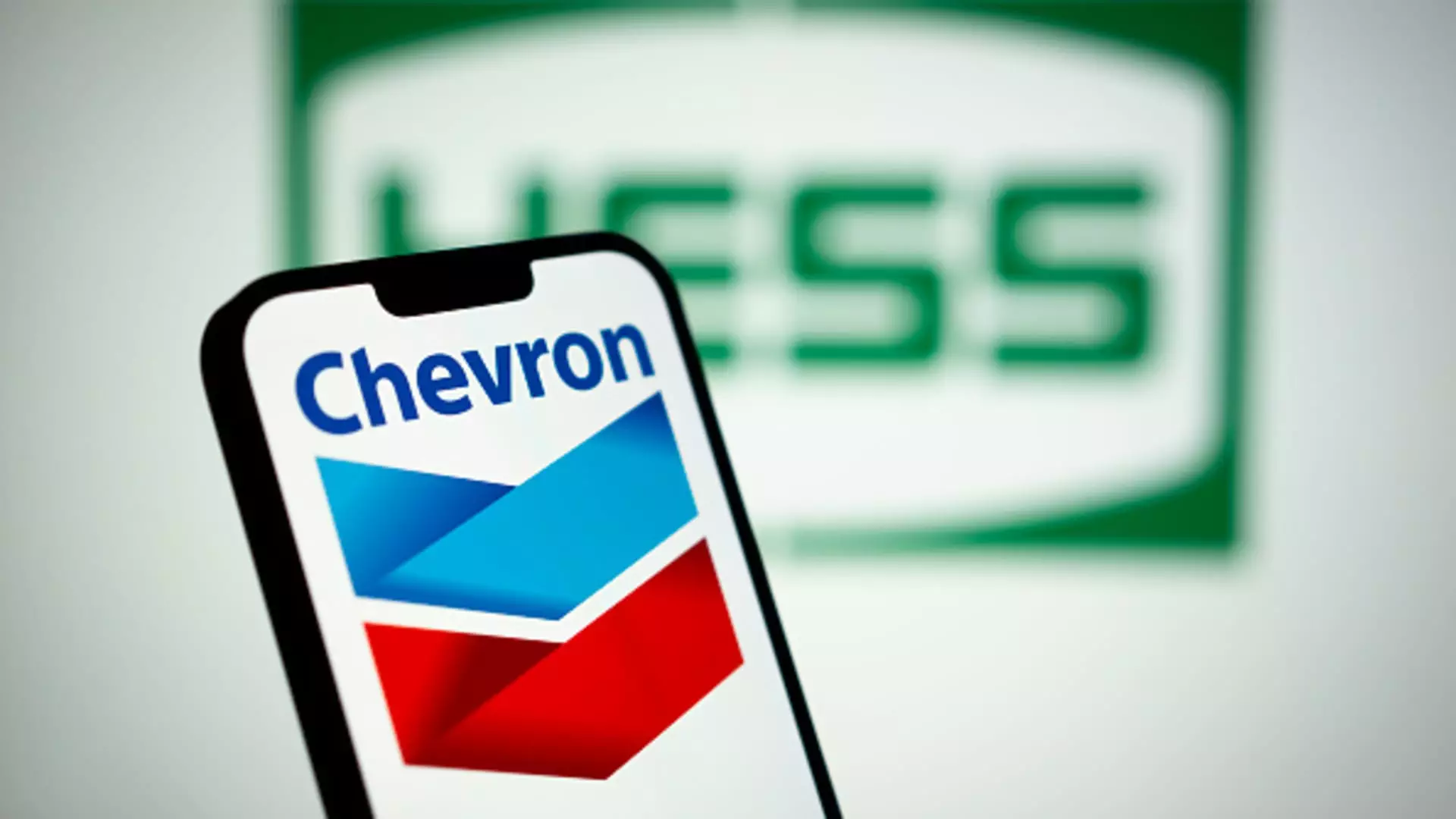Chevron has recently reported its financial performance for the third quarter, showcasing a complex picture of resilience amidst market challenges. Notably, the oil giant surpassed analysts’ expectations for earnings and revenue, with a notable 2.6% increase in share price during premarket trading following the announcement. However, underlying the headline figures is a significant decline in profits compared to the previous year, driven by diminishing margins on refined products and a drop in market prices. This illustrates the duality of success in meeting short-term investor expectations while grappling with longer-term sustainability issues.
Financial Highlights versus Year-Ago Figures
The highlights from Chevron’s financial reports indicate both strengths and weaknesses. The firm recorded earnings per share of $2.51, surpassing the anticipated $2.43, and total revenues of $50.67 billion, exceeding forecasted revenue of $48.99 billion. However, it is essential to note that Chevron’s net income plummeted by 31%, down to $4.49 billion, marking a stark contrast to the previous year’s performance. This decline emphasizes the volatility inherent in the oil market and raises questions about Chevron’s operational efficiency amidst fluctuating commodity prices.
In a bid to adapt to the shifting landscape of the energy sector, Chevron is reevaluating its portfolio. The company is planning strategic asset sales in several regions, including Canada, Congo, and Alaska, with expected closures by the end of 2024. Such moves signify a concerted effort to streamline operations and align resources more efficiently, but they also underscore the pressures the company faces in maintaining profitable operations in a competitive market. Furthermore, Chevron aims to implement cost reductions totaling $2 billion to $3 billion by the close of 2026, showcasing its commitment to maximizing profitability in challenging times.
Despite the challenges in profit margins, Chevron has made significant strides in returning capital to shareholders, distributing a record $7.7 billion during the quarter. This distribution included $4.7 billion in share buybacks and $2.9 billion in dividends, reflecting the company’s prioritization of shareholder value in its corporate strategy. However, it is critical to note that Chevron’s stock performance has trailed behind the broader energy sector, which has grown by over 6% year-to-date. The company’s flat performance indicates a potential disconnect between current operations and investor sentiment, which could be linked to overarching market uncertainties.
Chevron’s ongoing pursuit of a $53 billion acquisition of Hess Corp. adds another layer of complexity to its operational future. Although the Federal Trade Commission has cleared the acquisition, conditions set forth—such as barring John Hess from joining Chevron’s board—cast a shadow on the transaction. Furthermore, a dispute with Exxon Mobil regarding rights over Hess’s valuable oil assets in Guyana could jeopardize the acquisition. These challenges require astute navigation by Chevron’s leadership as they aim to consolidate their market position while respecting regulatory frameworks and existing disputes.
While Chevron has managed to maintain robust cash returns to shareholders and outperform certain revenue expectations, the company must confront real challenges tied to profit margins, market volatility, and strategic acquisitions as it seeks to solidify its standing within an increasingly uncertain energy landscape.

